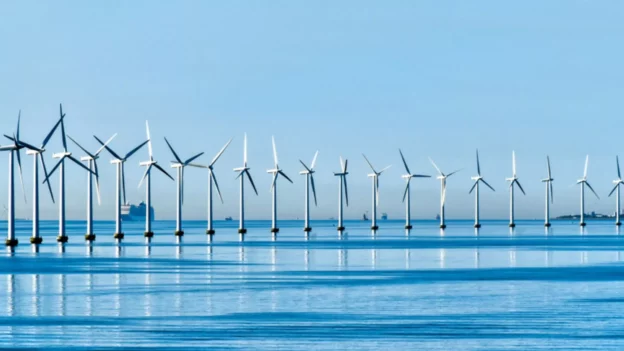The offshore wind energy industry in the United States faced a new setback last week due to the lack of availability of the required turbine, marking a significant setback for the development of three key projects in New York, which represented a combined total of 4 GW, i.e. around two-thirds of the projects underway in that region.
Setbacks in offshore wind projects
This situation has been widely attributed to the non-existence of 18 MW turbines , which triggered a series of events that led to the conclusion of the negotiations. This setback represents a notable setback for an industry that, although it had shown signs of progress after facing difficulties the previous year due to factors such as inflation, high interest rates and supply chain problems, now faces the challenge of meeting the ambitious goals of offshore wind power both at the national and state level.
According to BloombergNEF analyst Atin Jain, the cancellation of negotiations means that New York state now has 1.7 GW of offshore projects in development, insufficient to reach the state’s goal of 9 GW by 2035 .
For its part, the New York State Energy Research and Development Authority explained that the decision to end the negotiations was based on the inability of GE Vernova Inc. to supply the 18 MW turbines required for the projects. Investors involved include units of Copenhagen Infrastructure Partners P/S, TotalEnergies SE, Rise Light & Power LLC, National Grid Plc and RWE AG.
Changes and challenges in planning and costs
Initially, GE had announced that it would manufacture 18 MW turbines, but in late 2023, in light of reliability concerns, the company decided to limit itself to 16.5 MW turbines, resulting in a change to the original plans.
Both turbine variants have 250-meter rotors, and according to a company representative, wind farms equipped with smaller turbines could actually generate more electricity, reflecting the challenging market conditions that influenced the conclusion of the negotiations. contractual.
The lack of larger turbines has forced developers to rethink their projects, opting for smaller turbines, resulting in a greater number of foundations and cables, therefore, higher costs.
The continuity of offshore wind projects in New York
Despite the cessation of contract negotiations, developers have expressed a willingness to collaborate with New York on future bids, suggesting that the projects are not completely off the table and could still move forward with adjustments to their designs and implementation strategies.
The situation highlights the critical importance of strategic planning and risk management in large-scale renewable energy projects, as well as the need for greater diversification and redundancy in the supply chain of key components to mitigate the impact of potential setbacks in the future.
Follow us on social networks and don’t miss any of our publications!
Inspenet.com YouTube LinkedIn Facebook Instagram X
Source: gcaptain.com
Photo: Shutterstock

